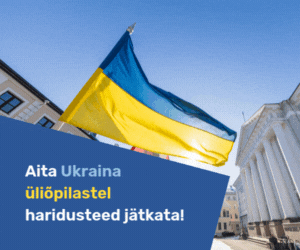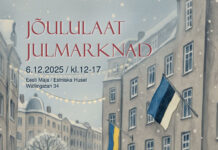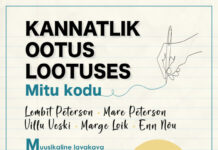The Estonian Embassy in Stockholm and the Estonian Maritime Museum organized the Estonian-Swedish Virtual Seminar “Challenges in exploring the Arctic: historical maritime exploration and current realities” on the 5th of May. One of the speakers was prof emeritus Hain Rebas, who gave an overview of the Russian early 19th-century exploratory background.
Introduction
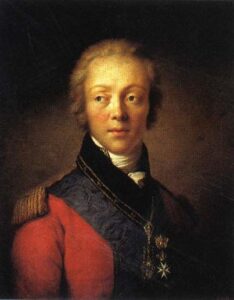
In the year 1800, Europe had been drawn into the Napoleonic Wars, and Russia’s Czar Paul I still had some months to live before his assassination. The Czar’s influential Grand Marshal of the Court was count Fyodor Rostopchin, an Army general, later distinguished as Moscow’s unhappy defender against Napoleon.
At a meeting of the Russian Foreign Policy Committee in 1800, count Rostopchin stood up and proclaimed prophetically that Imperial Russia will become the Hercules of international politics. – Hercules! Therefore, Russian sea power should be established in new oceans far beyond the neighbouring Baltic Sea.
- Factual background
Like everything else in early modern Russian history, the building of a merchant fleet and a navy started with Czar Peter I, who reigned a century before Paul I. The following Russian 18th-century expansion on the European continent and the systematic development of Peter’s Baltic Sea Navy are well documented. Then already, Russian Cossack agents, like famous Jermak and others, had penetrated the Eurasian continent with its great rivers through to the Pacific Ocean and claimed the territories for the crown.
Also, in the far north, Russians partly explored the Barents Sea, the Kara Sea, the Laptev Sea and even the East Siberian Sea – including the islands. Then, in the mid-18th century, great leaders and scholars, like Vitus Bering, and Mikhail Lomonosov, supported by the new Russian Academy of Sciences, spent decades gathering, sorting out and presenting facts about faraway waters, coasts, passages, skerries, islands and their inhabitants, flora, fauna and minerals.
Around 1790, the Russian Baltic Navy prevailed in some decisive battles with the revengeful Swedes. In 1788 the attacking Swedish Navy failed to break the Russian defence line at the island of Hogland in the middle of the Gulf of Finland. Another Swedish attempt 1790 outside Kronstadt, actually the last great sailing-ships line-to-line-battle in the Baltic Sea, ended in a draw. The war ended in status quo – the POINT of which is, that from the end of the 18th century, the Russian Baltic Fleet indisputably was the biggest and strongest in the Baltic Sea.
Furthermore, after having finally devoured continental Poland and Lithuania in the 1790s, and after having established herself in the Black Sea and in the Mediterranean, Imperial Russia had become an important player around 1800, not only at sea but also in European top-politics. One can easily assume that the drive to find new continents and markets, like the British had done for centuries, by sailing even further north, and pushing through an imagined North-East Passage to reach the riches of China and India directly, was by then entrenched in the Petersburg Court and Admiralty.
2. Theoretical deliberations
It is tempting to compare Rostopchin’s proclamation and implicit urging of the forces in 1800 with the American naval historian A.Th.Mahan’s thesis almost one hundred years later, in 1890. Mahan strongly highlighted the decisive role of the Royal Navy in creating, forming and maintaining the British empire. Spoiler alert: Without sea power, no world hegemony.
In fact, Mahan’s work became a naval strategy bible for imperialistic professionals all over the world. It strongly influenced politicians and naval theoreticians in England, the USA, Germany (Tirpitz, Kiel) and Japan (Tsushima 1905). I wouldn’t doubt that even Soviet Admiral Sergei Gorshkov, who from the end of the 1950s developed the enormous nuclear Soviet Northern Fleet in Severomorsk, was a later scholar of Mahan.
Rostopchin of course knew nothing about Mahan. But he seems to have been capable of independent observation and reflection. Just like Mahan, he had the record of the British Royal Navy and its symbiosis with the expanding British Empire more or less before his eyes. And if he really needed a prototype, a role model for his naval thinking, he could always have resorted to Peter I, the “founder of everything Russian”. Peter is quoted to have said: “A ruler that has but an army has one arm, but he who has a navy, has both”. Count Rostopchin did not need a Mahan to understand macro-politics and where to proceed with his muscular Russia.
3. Early 19th century
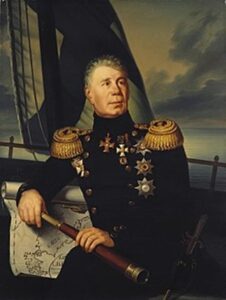
It is hard not to be reminded of this optimistic count Rostopchin when considering Adam Johann von Krusenstern’s three-year-long voyage around the world, 1803-06, Russia’s first circumnavigation.
33 years old Krusenstern was commissioned to support the Petropavlovsk city and garrison far away on Kamchatka with supplies, establish diplomatic relations with Japan and Chinese coastal powers, and pursue scientific research all along the trip. But of course, one can assume that he off the record, like Mannerheim on his 1906-08 Asian expedition, also carried on qualified reconnaissance for military purposes.
Last but not least, he was to enhance the glory of his imperial patria, shortly, to establish Russia among the world’s elite in navigation.
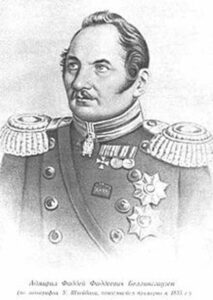
During his long voyage, Krusenstern’s young Landsmann Fabian Gottlieb von Bellingshausen, born on Hoheneichen/Pilguse manor on the west coast of Estonian island Oesel/Saaremaa, served as his chief cartographer.
Krusenstern himself was born on the Haggud/Hagudi manor between Tallinn and Rapla. He spent his later years in his manor Aß/Kiltsi in Wierland, where he wrote, corresponded and also died. He is buried together with his wife in the Tallinn cathedral.
His youngest cadets were the brothers Mauritz and Otto von Kotzebue from Tallinn, 13 resp. 15 years old at the start, sons of the famous playwright August von K, whose wife was a Krusenstern relative.
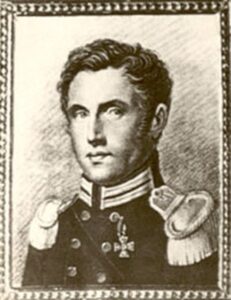
During the Napoleonic wars, Russia seized Finland from Sweden (1809). Then the Vienna Peace Congress of 1815 turned out extremely favourably for Russia. And as one of the sharpest tools of proactive czarist foreign policy, the Russian Admiralty then renewed its interest in exploring, mapping and claiming faraway seas and coasts. Already in the same year, 1815, now 28-year old Kotzebue on a private initiative set out from Kronstadt. In two expeditions, 1815-18, and 1823-26, he discovered and mapped more than 400 islands in the faraway Pacific. On his both world tours Kotzebue enjoyed the company of the zoologist Johann Friedrich Eschscholtz, another Landsmann, from Tartu university. His later years were spent on his Kau/Kõue manor south of Tallinn. He died in Tallinn. Both Krusenstern and Kotzebue published their reports in German, the Kotzebue atlas even in French.
In 1819, the Russian Admiralty was able to launch two new well-equipped explorative expeditions to the far side of the globe, one to the north, the other to the southern hemisphere. The southern one was led by Fabian von Bellingshausen, already well-known to us, who, as we know, also discovered Antarktis. We will hear more about him as follows.
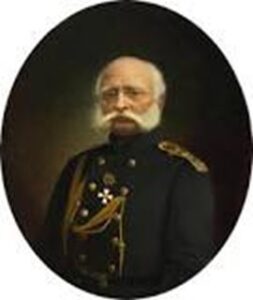
The northern expedition, 1819-23, moved around in the Bering Straits, the East Siberian and the Chukchi Sea, and along the American North-West coast as well as in Alaska, then still under Russian rule. Managed by tough leaders like Ferdinand von Wrangel, another Baltic German, the expedition pushed further north than man had ever previously sailed (Bear island). Wrangel spent his last years on his manor Rojel/Roela in Wieland and passed away in Tartu.
4. Summing up
Concluding – Around 1800, accumulated intellectual, financial, physical and mental resources, and a lot of military power, for exploration and expansion also at sea, now also across the globe, was at hand in self-confident St.Petersburg.
In one way or other, we hear count Rostopchin’s bold proclamation about Russia as a future Hercules of the seas resound also in the following strenuous contributions on the other side of the globe by the quartet Adam Johann, Fabian, Ferdinand and Otto – all four of them, as it happens Landsmänner / kaasmaalased, fellow-countrymen of us and protagonists of our following afternoon deliberations…
Prof emeritus HAIN REBAS
moc.l1766167219iamg@1766167219saber1766167219.niah1766167219
If you would like to re-watch the webinar, the recording can be viewed: https://polarseminar.worksup.com/



